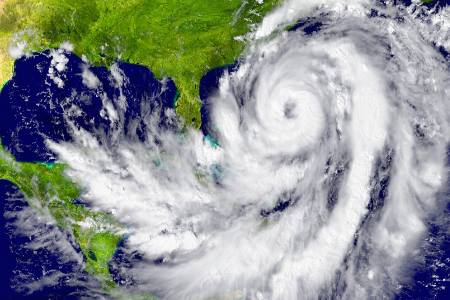Sustainable Living & Sustainable Lifestyle
The Relationship Between Climate Change and Deadly Hurricanes
The Relationship Between Climate Change and Deadly Hurricanes
This year has seem one of the most active hurricane seasons in recent memory. Not only have there been numerous hurricanes, but the power of the storms has reached historic proportions.
Hurricane Harvey devastated the Texas coast with torrential rain. More than 50 inches of rain fell in some parts of the state, leading to record flooding across the Houston metropolitan area and severe wind damage along the southeastern coast of the state.
 Hurricane Irma ripped through Florida, causing millions of dollars in damage, mostly in the central part of the Sunshine State and in South Florida.
Hurricane Irma ripped through Florida, causing millions of dollars in damage, mostly in the central part of the Sunshine State and in South Florida.
And then Hurricane Maria hit the Caribbean, knocking out all the power in the U.S. territory of Puerto Rico and wreaking havoc with sustained winds reaching 200 mph.
The death tolls are staggering. The unofficial number of dead in Florida after Irma has reached 75. Texas officials have reported the death toll from Hurricane Harvey at 82. The death toll from Hurricane Maria is expected to be in the hundreds.
Those are sobering numbers. For those interested in environmental issues, it also raises a question: What does climate change have to do with the number of deadly hurricanes this year?
Most scientists say that the relationship between hurricanes and climate change is real, but the research into the issue is ongoing. Certainly, patterns are emerging that are disturbing, particularly for residents along the Gulf of Mexico and Atlantic Ocean coasts.
A recent report from 13 federal agencies shows some of the issues involved with global warming, including those involving hurricanes. The report is part of the National Climate Initiative undertaken by the federal government.
The report highlights several issues.
Generally, the rising temperatures around the globe have created an environment that is expected to lead to more intense hurricanes, if not an increase in the actual number, according to the report. This is based on computer modeling given the current state of warming around the world.
Hurricanes draw energy from warm water. With the rise around the world in temperatures, water is warmer now in the summer months. This may be leading to hurricanes of more intensity, according to scientists. Both Irma and Maria are among the most powerful hurricanes ever measured in the Atlantic Ocean. While warmer water might not lead to more hurricanes, it intensifies a hurricane once it has formed.
Global warming has led to more moisture in the atmosphere, and this in turn means heavier rainfall during hurricanes. While most people associate hurricane damage with high winds and storm surge, Hurricane Harvey showed that flooding can actually be the most devastating aspect of hurricanes.
Sea levels have risen in recent decades. Those higher levels can contribute to much worse storm surge along coastal areas, causing that much more damage. This is especially true in the lowest coastal areas, such as Miami and New Orleans.
In short, scientists at this point believe that climate change may not cause more hurricanes, but they make the ones that do form that much more intense. One of the authors of the federal government report, Texas Tech University climate scientist Katharine Hayhoe, told the New York Times:
“We care about a changing climate because it exacerbates the natural risks and hazards that we already face.”
Expect more revelations as research continues into the issue. But what’s now known is that climate change may be making hurricanes more powerful, and that’s bad news for people who live near the coast.